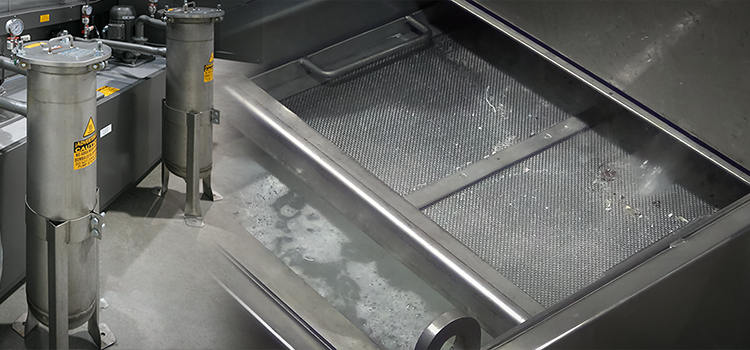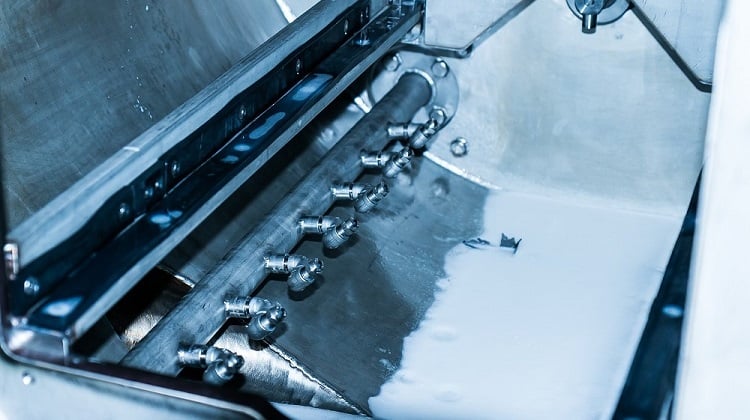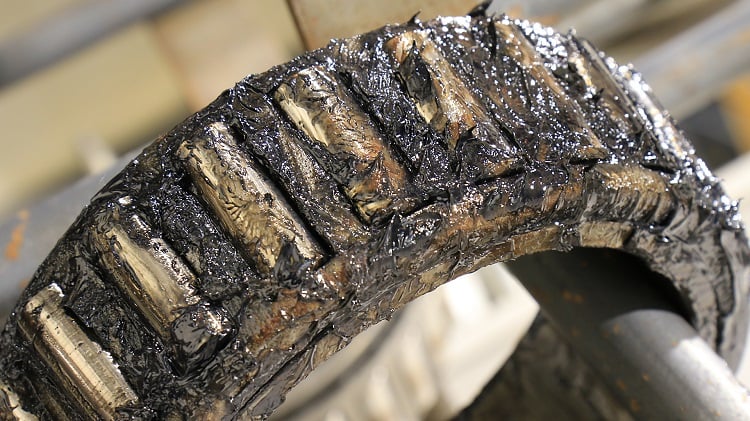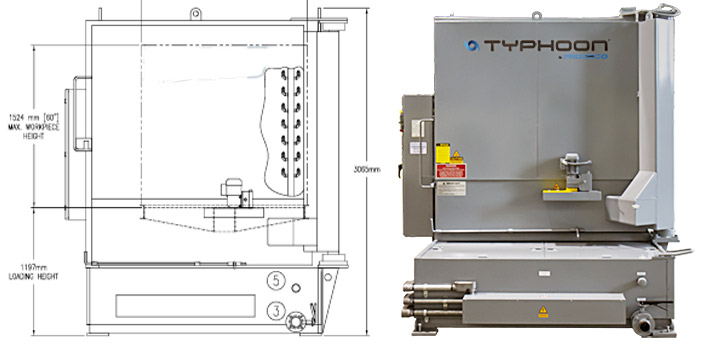WHY IS CLEANING SOLUTION MAINTENANCE IMPORTANT?
In addition to the physical parameters of water-based parts washing equipment, such as - temperature, spray pressure and flow, exposure time, spray nozzle design and impact angles as well as the relative movement between parts and nozzles - the choice of detergent and its concentration are the key to process stability and thus the constancy of high-quality cleaning results. During the parts cleaning process, as the detergent interacts with the parts' contamination, it is slowly consumed and the concentration drops, which will have a gradually deteriorating effect on the quality of the aqueous parts cleaning process. In addition, the contamination removed from the parts will accumulate in the cleaning solution and will continue to consume detergent. It is therefore imperative that the parts cleaning equipment employed has means to a) measure detergent concentration and initiate appropriate make-up in order to prevent excessive see-sawing of concentrations, as well as b) the means to remove accumulating contamination from the aqueous cleaning solution.
Along with the issue of cleaning quality goes the issue of lifetime economy of the entire cleaning operation, consisting of the cost of the equipment, energy, consumables, and labor.
HOW TO MEASURE DETERGENT CONCENTRATION?
Depending on the chemistry of the contamination and of the base material, different kinds of detergents can be selected. Your detergent supplier should recommend concentration sensing methods, which will likely sense one of the following:
- PH, as a measure of alkalinity of the solution of heavy-duty caustic cleaners.
- Conductivity, as a correlation between a set concentration and the actual concentration. It is an indirect measure that is subject to fluctuation not only by the concentration of detergent remaining, but also due to the kind and degree of contamination accumulated in the cleaning solution.
- Surface tension as a measure of remaining surfactants present in the solution. Surfactants are the key ingredient in detergents, since they facilitate the penetration of the aqueous cleaning solution between the contamination and the base material.
- Customized titration as a measure of the presence of other essential ingredients.
Of these methods, the measuring of surface tension is the most directly linked measure to the cleaning effectiveness of the detergent.
HOW TO EXTRACT CONTAMINANTS FROM THE AQUEOUS CLEANING SOLUTION?
The contaminants to be extracted from the cleaning solution can be characterized as:
- Large-size solids, either floating, sinking, or suspended
- Small-size contaminants suspended or dissolved in water
- Fats and oils, emulsified or floating
Floating solids can be skimmed by skim conveyor skimming the surface of the solution tank and discharging into waste disposal containers.
Sinking solids settling on the tank bottoms can be extracted by means of automatic sludge removal systems consisting of drag conveyors scraping the bottom of the tank and discharging into waste disposal containers.
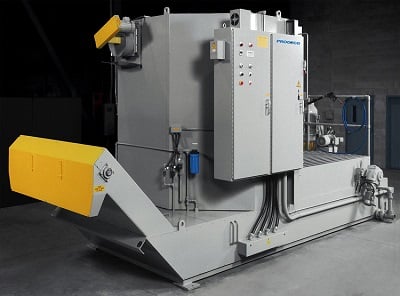
Suspended solids, depending on their specific gravity and particle size, can be separated – in descending order of particle size - by means of:
- Centrifugal separators
- Single or multi-stage filter systems calibrated to the specified particle size permitted in the cleanliness specification
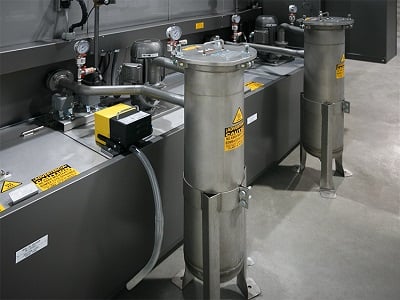
- Membrane micro filtration (down to 0.1 micron particle size); and Membrane ultra-filtration (UF) (down to 0.01 micron particle size).
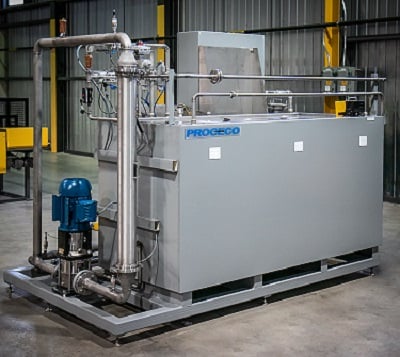
- Flocculation. Chemicals (coagulants) are added to the solution to bring the non-settling particles together into larger, heavier masses of solids called floc. This floc will settle at the bottom of the tank and can be removed, de-watered, filter-pressed, and disposed. Aluminum sulfate (alum) is the most common coagulant used for water purification.
Dissolved Contaminants, Lightly Contaminated Alkaline Wash Solutions and Rinse Waters can be treated by means of:
- Evaporation. See PROCECO ECO-SMART® Mechanical Vapor Recompression (MVP) evaporator.
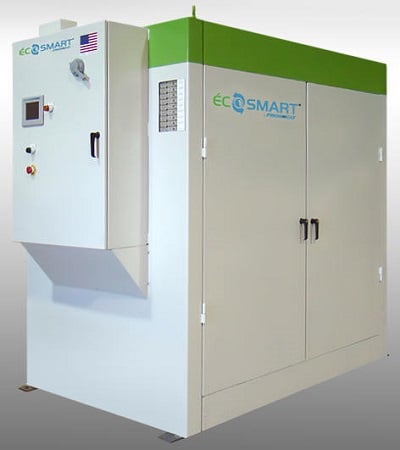
Floating oils and greases can be separated by means of:
- Belt skimmer
- Disk skimmer
- Continuous decanting of tank surface into a Fluid Separator operating on the basis of difference in density of two fluids.
Emulsified oils can be separated by ultra-filtration.
LIFE-TIME ECONOMY OF YOUR PARTS CLEANING SYSTEMS & OPERATIONS
In addition to the quality and economic issues raised above, there are two other elements that have great impact on the life-time economy:
- Water consumption: Recirculating water-based parts cleaning systems are always more economical than non-recirculating ones. Lower process temperatures will always reduce evaporation losses and therefore consumption of make-up water, plus the energy needed to heat it up. Compressed air blow-off stages will always reduce the drag over and overflow between stages and reduce the drag-out. Exhaust demisters will always condense and extract water droplets and energy from exhaust and put them back into the tank. In multi-stage processes, cascading back-flow solution make-up is always optimal. Refer to: Importance of Rinsing in Metal Cleaning Blog.
- Wastewater Disposal: All the above features will help to extend the tank life. Every tank change-out means a production interruption, maintenance labor for tank clean-out, transport and disposal cost of waste water.
- Energy Consumption: All the issues rose in water consumption count equally in energy consumption and offer a multiplier of economies.
